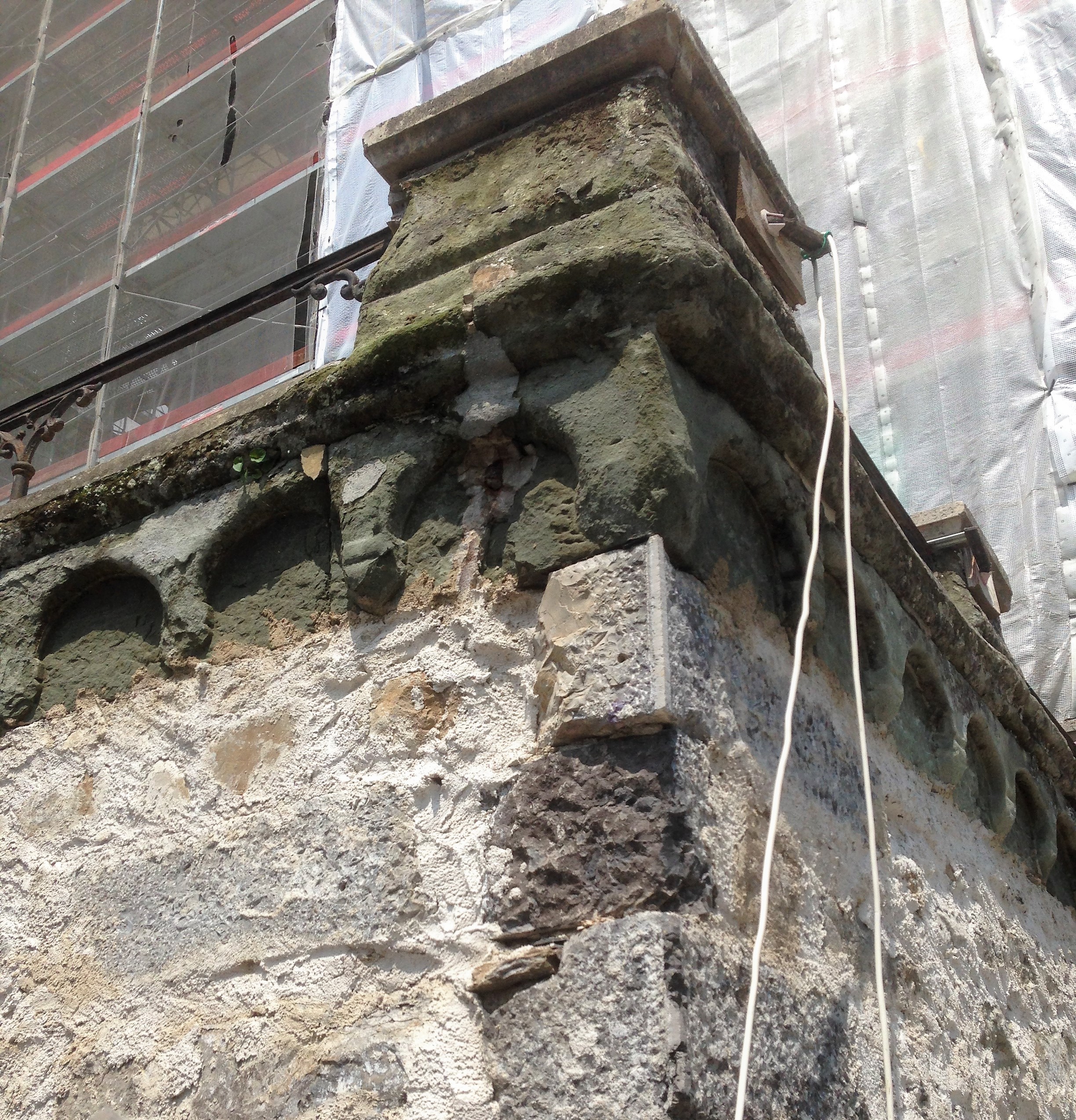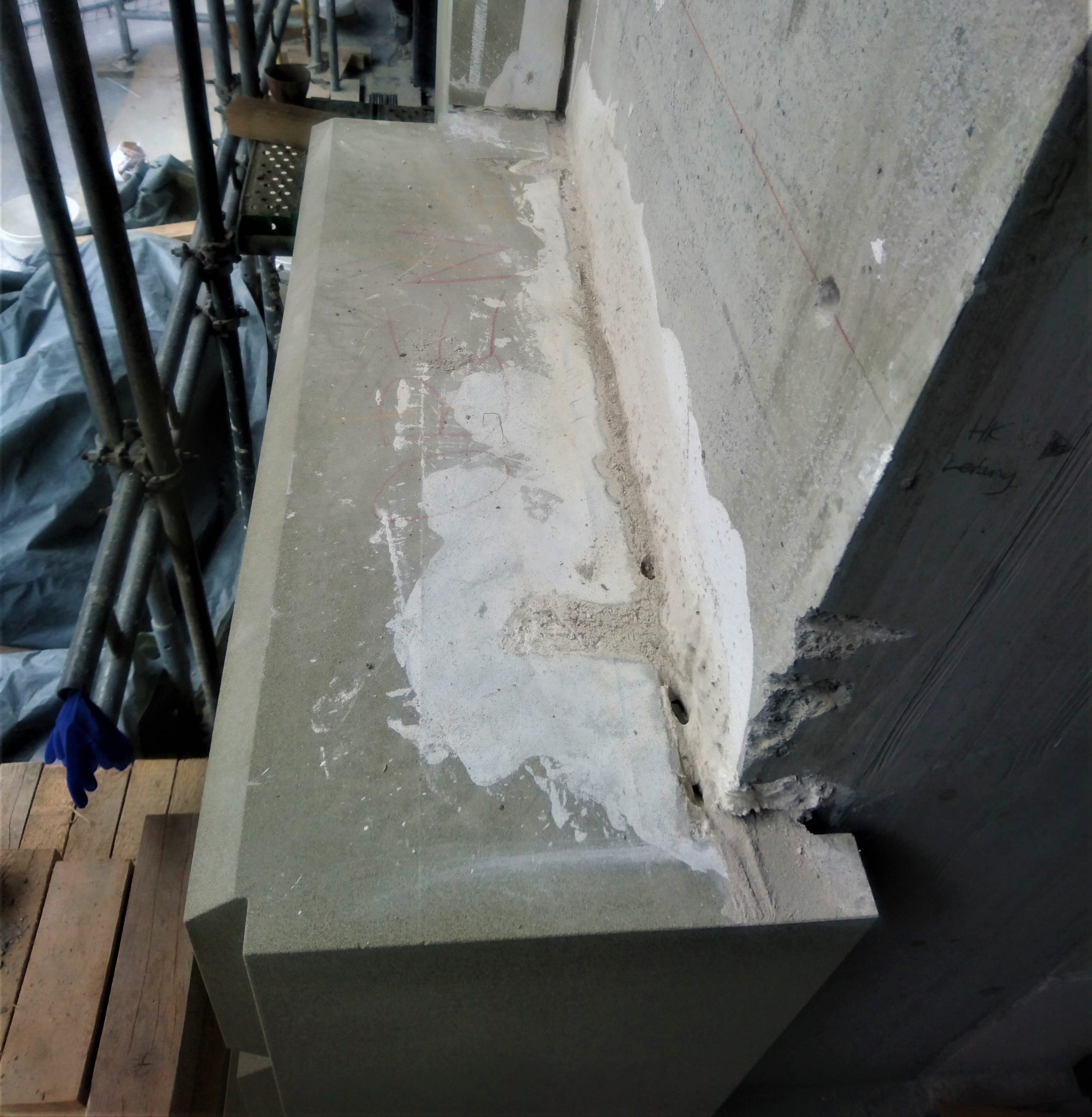Replacing Stones in Facades
There comes a point when a stone is no longer repairable or not worth repairing. When this happens, a new stone of the same shape as the old one is usually built into the facade. It’s basically like playing with Lego bricks – only extremely expensive, heavy, delicate ones.
If a part of a facade needs replacing, first you must draw a plan to show how the new piece should turn out. Concentration and precision are essential, because mistakes in the plan can be expensive. The new stone should be as close to the original as possible. The next step is to make room for it. As a rule, this means removing at least 10-15 cm of the old stone.
Once this is complete, you have to decide how big the joints should be. Joints are the gaps between the stones, which are filled with mortar so that the stones do not sit directly on top of one another. The gaps are kept in place with the help of plastic spacers. In the past, all kinds of materials were used for this purpose, from lead and wood to slate and pebbles – whatever was to hand. Next comes the actual replacement of the stone. Depending on the job, this may be quick and easy, or very difficult.
Now the stone is in the right place but still needs to be joined to the rest of the masonry. There are various ways of doing this. Either you can place the stone straight onto a prepared mortar bed, which doesn’t leave much time to adjust the position of the stone, or you can pour mortar around the stone. In this process, all the open joints are carefully sealed with a long sponge and the runny mortar is poured behind the stone. This method is quite sophisticated and time-consuming, but if done correctly, it guarantees a good, firm seal.





